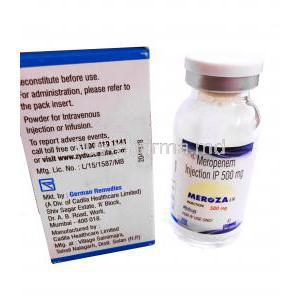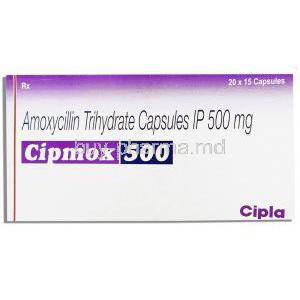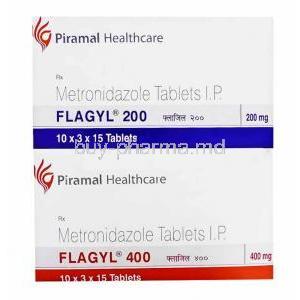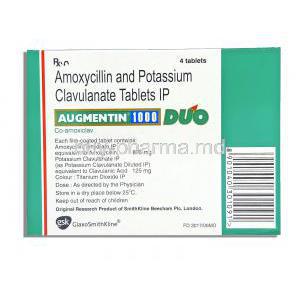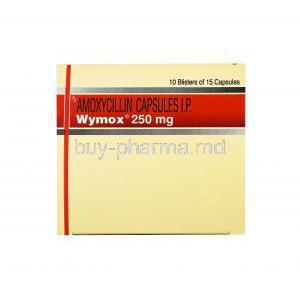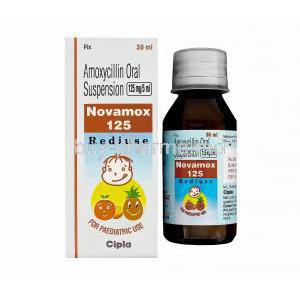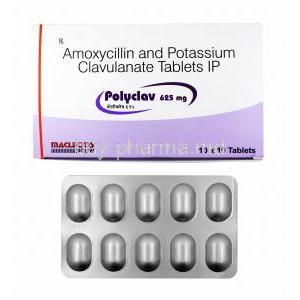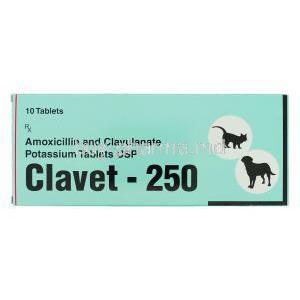Meropenem
- Introduction
- Uses of Meropenem
- How Meropenem Works
- Dosage and Administration
- Composition
- Side Effects
- Common Side Effects
- Off-label Use
- Interactions
- Warnings
- Contraindications
- Careful Administration
- Important Precautions
- Administration to the Elderly
- Administration to Pregnant Women and Nursing Mothers
- Administration to Children
- Overdosage
- Storage
- Handling Precautions
- Conclusion
Introduction
Meropenem has emerged as a symbol of hope in the battle against bacterial infections. Its proven effectiveness and strength as an antibiotic have gained recognition and approval. However, understanding the journey that led to its development and acceptance provides insight into the tireless efforts of the medical community in combating infectious diseases.
Overview of Meropenem
Meropenem is a type of antibiotic known as a carbapenem, which has a range of effectiveness against various bacterial infections. It is highly valued in settings for its ability to treat complicated conditions when other treatments have failed. It plays a role in hospitals, for managing complex infections.
Historical Development and Approval
Meropenem's origins can be traced back to the 20th century. It was created as a modified version of thienamycin and gained FDA approval in the 1990s. Since then, it has provided therapeutic advantages in situations where conventional antibiotics have been ineffective.
Uses of Meropenem
Meropenem is an antibiotic that is used to treat severe infections of the skin or stomach. It is also used to treat bacterial meningitis, which is an infection that causes inflammation of the tissue that covers the brain and spinal cord1. Meropenem is also used to treat other infections such as pneumonia, complicated urinary tract infections, and complicated infections of the stomach and intestine2. It is widely used to treat bacterial infections and its importance in numerous medical situations cannot be overstated2.
Here are the references for the content:
- Meropenem: Learn About Meropenem Uses, Dosage, Side-Effects, Warnings …2
- Meropenem Injection: MedlinePlus Drug Information3
- Meropenem Uses, Side Effects & Warnings - Drugs.com1
- Meropenem | Side Effects | Dosage | Precautions | Medicine4
Treatment of Severe Bacterial Infections
Meropenem is highly effective against a range of pathogens including those causing wounds and cellulitis1. It is an excellent treatment option for infections like peritonitis1. Whether it’s community-acquired or acquired in a hospital setting, Meropenem can effectively combat both forms of pneumonia1.
Here are the references for the content:
Meningitis Treatment
Meningitis, a dangerous bacterial infection that causes inflammation in the protective membranes surrounding the brain and spinal cord, can be effectively treated using Meropenem1. The fact that Meropenem can successfully penetrate these barriers is a testament to its nature.
Here are the references for the content:
- Meropenem: Learn About Meropenem Uses, Dosage, Side-Effects, Warnings …2
- Meropenem Injection: MedlinePlus Drug Information3
Other Bacterial Infections: Specific Bacteria Targeted
Meropenem is effective against a range of bacteria, such as Pseudomonas aeruginosa, Escherichia coli, and different strains of Streptococcus1. This demonstrates its ability to fight against various types of bacteria1.
Here are the references for the content:
How Meropenem Works
Mechanism of Action Against Bacteria
In its essence, Meropenem hinders the synthesis of cell walls. It attaches to penicillin-binding proteins, disrupting the stability of the bacterial cell wall ultimately resulting in the demise of bacterial cells.
Role as a Carbapenem Antibiotic
Being part of the carbapenem class, Meropenem has the advantage of resisting beta-lactamase enzymes. This quality enables it to maintain its effectiveness in cases where other beta-lactam antibiotics may not work as effectively.
Importance in Combating Antibiotic-Resistant Strains
The increasing threat posed by bacteria that are resistant to antibiotics requires practical solutions. Meropenem plays a role in treating infections that cannot be tackled by other antibiotics as many enzymes do not easily break it down.
Dosage and Administration
Recommended Dosage Based on Condition
The prescribed amount of Meropenem can differ depending on the seriousness and nature of the infection. Generally, the recommended doses for adults range from 500 mg to 1 g every 8 hours.
Duration of Treatment
The duration of treatment depends on the type of infection, with treatments lasting between 5 and 14 days. It is crucial to follow the instructions provided by a healthcare professional.
Administration Methods: Intravenous Use
Composition
Active Ingredient: Meropenem
Meropenem, the drug's core component, gives it its antibacterial properties.
Additional Ingredients and Stabilizers
Apart from the compound, Meropenem formulations can include additional substances and stabilizers to improve its shelf life and solubility. The specific ingredients used may vary depending on the manufacturer and the product's formulation.
Different Available Strengths
Meropenem comes in strength to meet various medical requirements, typically ranging from vials of 250 mg to 1 g.
Side Effects
Overview of Side Effects
Although Meropenem is effective in fighting infections like any medication, it can have side effects. The severity of these side effects may vary from person to person. It can range from mild to severe.

Distinguishing Between Common and Rare Side Effects
Side effects that are commonly observed are reported frequently, while rare side effects only occur in several patients. It is crucial to distinguish between these two categories to assess the balance between the risks and benefits of the medication.
Common Side Effects
Gastrointestinal Issues: Diarrhea, Nausea
Many patients often experience issues such as diarrhea and nausea, which appear to be quite common. It is crucial to stay vigilant and closely observe any signs of discomfort. If these symptoms persist or worsen, consulting a professional for guidance is advisable.
Neurological Effects: Headaches, Dizziness
Neurological side effects, although they occur often, may present as headaches or a feeling of dizziness. These symptoms typically lessen as the body adjusts to the medication. It should still be kept under observation.
Skin Reactions: Rash, Itching
Sometimes people may experience skin responses, like rashes or itching. Although these reactions are usually harmless, it's essential to seek help if they occur suddenly or are severe.
Off-label Use
Situations where Meropenem is used off-label
Meropenem, while predominantly prescribed for bacterial infections, has been occasionally employed off-label for conditions that haven’t received official approval from regulatory authorities. Certain medical professionals have opted to use it for urinary tract infections and specific gynecological infections12.
Here are the references for the content:
Meropenem/Vaborbactam: A Review in Complicated Urinary Tract Infections1
Recurrent urinary tract infections in women - a major problem2
Research supporting off-label uses
Various research studies have explored the uses of Meropenem beyond its approved indications, often revealing possible advantages. However, it is crucial to approach these discoveries with caution and depend on the community's agreement.
Associated risks and considerations
Off-label use always raises a range of considerations. It can lead to reactions that have not been documented before, an increased potential for antibiotic resistance, and unexpected drug interactions.
Interactions
Medications that may interfere with Meropenem
Some medications can affect how Meropenem works or how it is processed in the body. Some examples of these medications include Valproic acid and Probenecid.
Impact of alcohol or specific foods
Although Meropenem does not interact with alcohol, consuming alcohol may worsen some of the side effects of the drug. Additionally, no foods are known to have adverse interactions with Meropenem, but it is essential to maintain a balanced diet while undergoing treatment.
Importance of informing healthcare professionals about other medications
Ensuring that healthcare professionals are well-informed about the medications is critical. This helps provide effective treatments and minimize the chances of harmful drug interactions.
Warnings
Situations requiring extra caution
Extra care must be taken when prescribing Meropenem to patients with kidney disorders, neurological conditions, or a history of seizures, as it may worsen their existing conditions.
Possible allergic reactions
Although it is uncommon, there is a possibility of experiencing reactions to Meropenem. These reactions may manifest as hives, breathing difficulties, or swelling of the face, lips, or throat.
Monitoring requirements during treatment
Monitoring patients is crucial for individuals with multiple medical conditions. It's essential to incorporate blood tests, evaluations of kidney function, and thorough examinations for any indications of an allergic reaction into their treatment plan.
Contraindications
Specific medical conditions making Meropenem unsafe
People who have had allergic reactions to any carbapenem antibiotic or have specific neurological conditions may be advised against using Meropenem.
Previous allergic reactions to carbapenem antibiotics
If someone has ever had reactions to any medication from the carbapenem family, it is recommended to avoid using Meropenem to prevent the possibility of experiencing potentially severe allergic reactions.
Careful Administration
Considerations for those with kidney disorders
Meropenem is eliminated from the body through the kidneys, meaning patients with kidney problems may need to adjust their dosage. It is important to monitor kidney function in these situations.
Monitoring liver function
While it is not frequently observed, Meropenem can impact liver enzymes. Regular monitoring of liver function can help prevent any complications related to the liver.
Ensuring correct dosage and timing
Following the recommended dosage and timing instructions ensures the treatment works effectively and minimizes any side effects.
Important Precautions
Understanding the risks of antibiotic resistance
Improper usage of antibiotics such as Meropenem can lead to the development of resistant bacteria, which weakens the effectiveness of crucial medications. It is vital to understand this risk and make decisions accordingly.
Importance of completing the prescribed dose
It is essential to continue taking the medication for the duration, even if symptoms improve, to prevent the infection from returning and to reduce the risk of bacteria becoming resistant. Therefore, it is essential to complete the prescribed course of treatment.
Awareness of potential secondary infections
Sometimes, antibiotics can disturb the balance of bacteria in our bodies, which can result in additional infections. It's essential to be aware of this possibility so that we can promptly address any condition if it occurs.
Administration to the Elderly
Adjusted dosages and concerns
Elderly individuals, due to changes in their body functions may need adjustments in medication dosage. They could also be more prone to experiencing side effects such as dizziness or gastrointestinal issues.
Monitoring for specific side effects
We must be extra careful in identifying any side effects, such as confusion or issues with kidney function, which are more common, among older individuals.
Importance of regular check-ups
Regular appointments guarantee that any possible issues are identified and promptly dealt with.
Administration to Pregnant Women and Nursing Mothers
Known risks to the fetus and newborn
Meropenem is classified as a Class B drug during pregnancy, indicating no evidence of harm to the unborn baby, but its always recommended to be cautious. Nursing mothers should know that Meropenem can pass into breast milk, which may impact the newborn.
Recommendations during pregnancy and breastfeeding
If it is determined that Meropenem is necessary, during pregnancy or breastfeeding, it should be administered with medical supervision, carefully considering the potential advantages compared to the associated risks.
Alternative treatments to consider
Depending on the type of infection and its severity, doctors may suggest using antibiotics that are known to be safe, for pregnant or nursing women.
Administration to Children
Pediatric dosages and adjustments
Pediatric patients usually receive a dose of Meropenem based on their body weight. Adjustments are crucial to ensure effectiveness and avoid potential harmful effects.

Specific side effects in pediatric patients
Children may experience side effects, such as heightened irritability or gastrointestinal issues. It is crucial to monitor them to ensure their well-being.
Monitoring growth and development during treatment
Regularly monitoring growth patterns and developmental milestones is crucial, especially when administering medication, particularly in children. This helps to identify any potential irregularities or deviations.
Overdosage
Recognizing symptoms of overdose
Symptoms could include feelings of nausea, frequent episodes of vomiting, and neurological signs such as seizures or excessive drowsiness.
Immediate actions to take
If someone is suspected of overdosing, seeking medical help is crucial. Since there isn't an antidote for an overdose of Meropenem, the focus of treatment lies in providing supportive measures.
Long-term consequences and management
Although the effects of an overdose can often be reversed in the run, it is essential to monitor the situation and provide supportive measures consistently. In some cases, hemodialysis may be necessary.
Storage
Ideal storage conditions for Meropenem
Meropenem should be stored at room temperature in a controlled environment away from moisture and direct sunlight. This helps maintain its effectiveness as a medication.
Shelf life and expiration considerations
Using Meropenem after it has expired may result in reduced effectiveness. It is essential to check the expiration date before administering it.
Disposal of expired or unused medication
It would be best if you disposed of expired or unused Meropenem according to the regulations in your area. Usually, there are designated pharmaceutical disposal sites where it can be safely discarded.
Handling Precautions
Safely preparing the medication for administration
Before preparing meropenem, it is essential to ensure conditions. Make sure your hands are sanitized, and the working area is clean. Meropenem is usually available in form and needs to be reconstituted under these sterile conditions.
Avoiding contamination
It is essential to use vials and sterile equipment. Once the solution has been mixed, it should be used promptly to prevent microbial contamination.
Appropriate protective measures for caregivers
When giving Meropenem, caregivers should wear gloves. If there is a possibility of spillage, use protective eyewear.
Conclusion
Meropenem is a tool for fighting bacterial infections. Using it wisely, considering interactions, side effects, and special considerations leads to the best patient outcomes. Using it and being aware of potential complications is crucial while maintaining open communication with healthcare providers. This strengthens the effectiveness of the drug in treatment plans.


